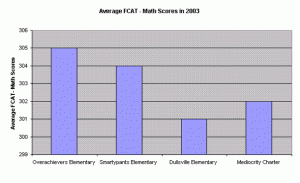In this week’s podcast, we wrap up our discussion of Information Literacy as the means to obtain background knowledge with a walk-through of an Internet-based research project regarding the Texas Republican critical thinking story that’s been in the news.
After that, we’ll take a look at another subject not always thought of in the context of critical thinking: numbers, notably the extraordinary ability quantitative information has to convince and persuade.
Numbers in the abstract are probably the most perfect things we encounter in life. For no matter where you live and what culture you come from, two plus two will still equal four. But once numbers are pulled from this abstract realm and brought down to the real world (by adding a unit to them, such as inches, percentages, or numbers of votes), they begin to get as messy and unpredictable as anything else in life.
This gap between abstract perfect numbers and messy real ones creates an opening for all kinds of misperceptions, mistakes and deceptive techniques which you need to be aware of if you’re going to use quantitative information correctly when engaging in any critical thinking exercise.
This week’s resources include:
Critical Voter – Mathematical Deception – Quiz
Critical Voter – Mathematical Deception – Lesson Plan
Primary resources used for Information Literacy exercise
- Austin Chronicle article
- Outcome Based Education
- Checking the facts – Austin Chronicle
- Head of Texas GOP explains controversial platform decision
Book mentioned in this podcast: Proofiness by Charles Seife
White House on Women in America
Analysis of White House report on Women in America
COMAP – Consortium for Mathematics and Its Application (which offers the CD based course Casting Your Ballots on electoral and political math subjects)
The post Critical Voter – Podcast 9 – Mathematical Deception appeared first on Critical Voter.
